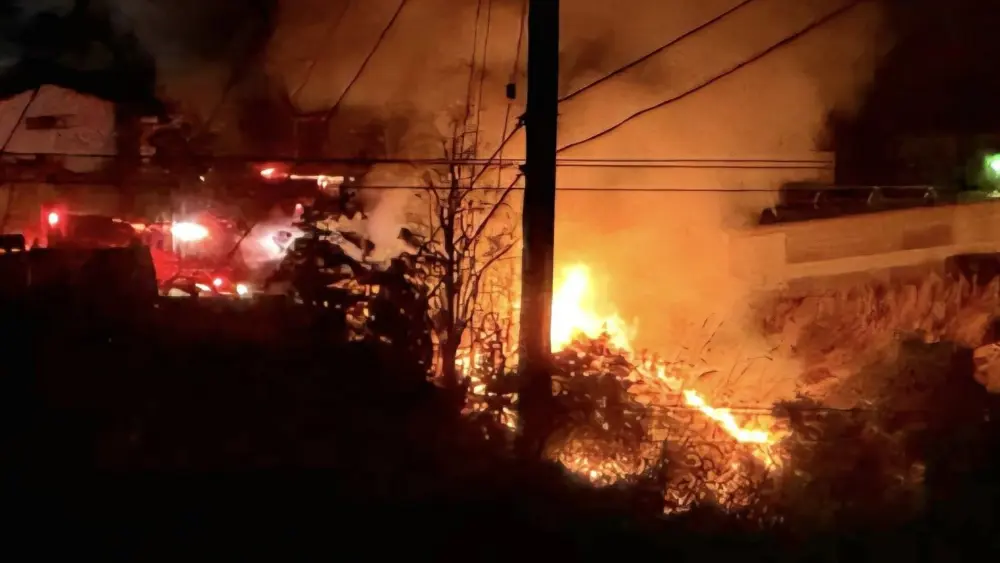KAMIAH, Idaho: August 15, 2023— The National Weather Service has issued an excessive heat warning for the lower Hells Canyon region, Salmon River region, and the Orofino and Grangeville regions starting at 11:00 AM Tuesday, August 15, 2023, and persisting through 11:00 PM Thursday, August 17, 2023. Dangerously hot conditions, with temperatures ranging from 105 degrees to 115 degrees in the Orofino/Riggins/Hells Canyon areas and 97 degrees to 105 degrees in the Grangeville area.
This increase in temperatures, will also bring much lower relative humidity; thus, overnight moisture recoveries can be poor. Fire behavior can be expected to increase as the air and fuels dry back out with the predicted weather forecast over the next few days. Fires may again move into areas that had not been recently burned, potentially causing fire managers to make additional closures for public health and safety. It is the goal of fire and forest management to maintain safe access to recreation areas whenever possible. Please be advised that fires that have not been active recently may begin to increase in activity again.
Current Fires on the Nez Perce-Clearwater NF as of reporting time:
Full Suppression Strategy Defined: This strategy implies that a fire will be “put out” as efficiently and effectively as possible while providing for both firefighter and public safety.
Point Protection Strategy Defined: A wildfire response strategy which protects specific assets or highly valued resources from the wildfire and may also utilize features such as past wildfires or prescribed fires, roads, rivers, etc. to ultimately prevent the fire from impacting more distant values.
Salmon River Ranger District
Fires with a Full Suppression Strategy
Midnight Fire was started by lighting on July 10, 2023, and is burning thirteen miles east of Grangeville. Fire size has remained at approximately 179 acres, with 75% containment around the fire perimeter. Fire behavior has been minimal, with creeping and smoldering.
Moose Creek Ranger District
Fires with a Point Protection Strategy
Wahoo Point Fire was started by lightning on July 29, 2023, and is burning near Indian Lake, about 10 miles east of Moose Creek and nine miles west of Lost Horse Recreation Site on the Bitterroot National Forest. The fire is approximately 90 acres. There are no official closures at this time; however, there may be future impacts to NFST #631 and NFST #430.
North Fork Ranger District
Fires with a Point Protection Strategy
Snowden Fire was started by lightning on June 7th, 2023, and is a little over half a mile northeast of Washington Creek Campground. It is approximately 110 acres, burning in mostly ponderosa pine and mixed conifer along the Beaver Creek Road (NFSR #247).
At this time, there are no closures, but fire managers anticipate a possible closure from National Forest Service Trail (NFST #617), Cave Point Trail, to the NFST #162, Flat Ridge Trail, junction.
Lochsa-Powell Ranger District
Fires with a Point Protection Strategy
Little Bear Fire was started by lightning and detected on July 3, 2023. It is about half a mile northeast of Bear Mountain Lookout, about one mile south of Highway 12, and less than one and a half miles southeast of Jerry Johnson Campground. The fire is approximately 1,204 acres, with smoke visible from Highway 12. Fire behavior is minimal, although that could change with the increasing hotter and drier weather conditions. Completion of objectives remains around 20%.
There are official area and trails closures for the Warm Springs area. The closure includes the area generally following the land south of the Lochsa River within a quarter mile of the eastern shore of Warm Springs Creek, below the confluence with Cooperation Creek in Section 20. Additional trail closures are as follows.
National Forest Service Trails (NFST) #49: Warm Springs Trail from its junction with Highway 12 to the junction with Trail #213
NFST #44: Cooperation Trail from its junction with the Warm Springs Trail #49 to the Top of the ridge approximately 6 miles East Southeast.
NFST #49-A: stock trail from its junction with the Cooperation Trail #44 to the junction with the Warm Springs Trail #49.
To view a closure map, please visit InciWeb, https://inciweb.nwcg.gov/incident-closures/idncf-little-bear-fire.
West Fork Fire was started by lightning on July 17, 2023, and is located about two and a half miles from Howard Camp. The fire is approximately 427 acres. Completion of objectives remains around 20%.
Currently, there is an official closure for a portion of the Lolo Motorway (NFSR #500) from its junction with Horseshoe Lake Road (NFSR #588) to its junction with Doe Creek Road (NFSR #566). To view a closure map, please visit InciWeb, https://inciweb.nwcg.gov/incident-closures/idncf-west-fork-fire.
Red River Ranger District
Fires with a Full Suppression Strategy
Elkhorn Fire was started on July 24, 2023. Cause of the fire is under investigation. Fire size is approximately 25,978 acres, burning about seven miles southeast of Dixie, ID. The fire started on the Payette National Forest and jumped the Salmon River onto the Nez Perce-Clearwater National Forest on July 30, 2023. There is a confine/control strategy in place for the West flank of this fire with the intent of preventing fire from moving to the West and impacting local communities of Mallard Creek, Cook Ranch, Dixie, Comstock, and Red River.
For more information about the Elkhorn Fire, please visit InciWeb, https://inciweb.nwcg.gov/incident-information/idpaf-elkhorn-fire.
Every fire receives a strategic, risk-based response that is commensurate with the threats and opportunities of that incident and uses the full spectrum of management actions that consider fire and fuel conditions, weather, values at risk, and resources available. These considerations are in alignment with the applicable Land and Resource Management Plan.
Wilderness Policy: The objectives of fire management in Designated Wilderness are to permit lightning-caused fires to play, as nearly as possible, their natural ecological role within Wilderness, and to reduce to an acceptable level the risks and consequences of wildfire within Wilderness or escaping from Wilderness.




